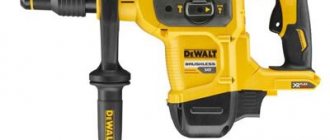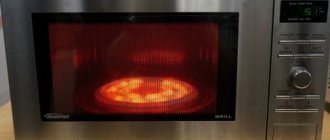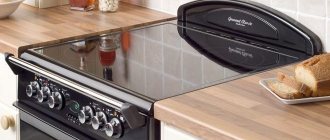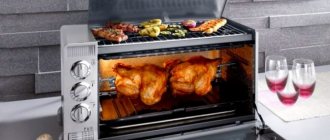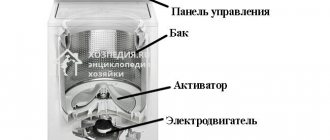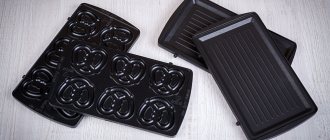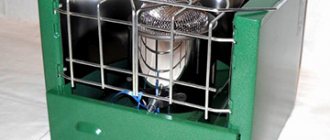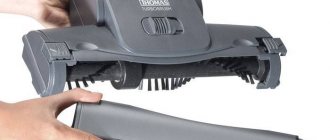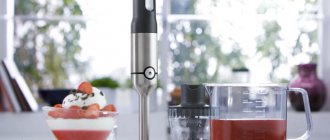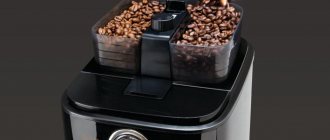For a modern family, a refrigerator, stove, electric oven or microwave is not enough in the kitchen. For cooking, additional small household appliances are used that can perform a narrow range of tasks, making food preparation easier.
One of the useful household appliances is a roaster. It can either become an assistant for preparing sandwiches for breakfast or replace a bulky oven, which is especially important for small-sized kitchens, as well as office premises and summer cottages. The range of options for a mini-oven and a standard oven is similar.
Chicken, vegetables, pies, cookies can be cooked in a roaster and in an oven. But a mini-oven takes up much less space, consumes a minimum of electricity, and is easy to operate. If the housewife is not keen on cooking and does not spend most of her time in the kitchen cooking for a large family, a roaster oven will be an alternative to an electric oven.
What is a roaster in the kitchen?
A roaster is a household electrical appliance that is very similar in function to an oven, but is compact in size. The device consists of a durable housing, inside of which quartz or electric heating elements are located. The sealed door is usually transparent, the inner chamber is made of stainless steel with a bioceramic coating, and burners can be located at the top.
The roaster is a small oven with several heaters inside. Attention! A photo of the roaster shows that in appearance it is similar to a microwave, but it can not only heat food, but also cook dishes.
The device, depending on the model and price, can be mechanical or electronic, with switches or a touch panel. Some devices have limited functionality, others are equipped with baking dishes and grids for toast and sandwiches.
Operating principle of the device
When planning to purchase an oven for sandwiches, toast, cooking fish, meat, etc., familiarize yourself with the principle of its operation. The device is a small rectangular oven with a transparent door. It is equipped with one or two heating elements (heating elements) and a timer necessary for counting the cooking time. When the device is connected to the electrical network, the heating elements begin to heat up, exerting heat on the dish.
While the upper electric heater is operating, the air fryer mode is turned on, and when the lower one is operating, the device begins to heat the dish. If two heating elements are turned on at once, then you can bake flour products and bake a variety of products in the roaster. The cooking temperature ranges from 60-290°C. Controlling the device is not difficult - you just need to set the necessary parameters on the switches. During cooking, the oven is illuminated and the food is clearly visible, so you can control the cooking process with your own eyes.
Why do you need a roster?
The main advantage of the device is its compact size. It fits easily even in the cramped kitchens where it is impossible to install a microwave or oven.
The device also combines the functions of several other devices. With its help it is possible to:
- defrost food without wasting time;
- reheat cooled food;
- bake fish or meat;
- make delicious sandwiches or bake a pie.
The roaster is quite capable of replacing a microwave, toaster and even an oven, which means it helps save not only space, but also money.
What it is?
The roaster is a compact household appliance made from heat-resistant ceramics or stainless steel.
The inner surface of the device is covered with a non-stick coating, exactly the same as that of its full-size counterparts. The shape of roasters can be square, rectangular or truncated, and some specialized models are even round. According to the type of power supply, roasters are classified as electrical devices and operate from a 220 V mains voltage. The number of heating elements varies depending on the purpose of the model and can be from 1 to 4. However, more often the devices are equipped with two heating elements, one of which is located in the upper part of the working chamber, and the second one is below.
The scope of application of roasters is quite extensive. A mini-oven is used for uniform heating of food, including first and second courses, defrosting meat and chicken, preparing sandwiches, grilling meat and roasting coffee beans. Using roasters, you can prepare scrambled eggs, omelettes, hot sandwiches, pies, muffins and pizza, as well as casseroles, julienne, lasagne and vegetable dishes.
The principle of operation of the roaster is not much different from the principle of operation of the oven and consists in the operation of heating elements, which heat the air in the working chamber to the desired temperature, thereby ensuring the cooking process.
The heating range is from +60 to +290 degrees and depends on the model. Most roasters are equipped with a timer that turns off the heating elements after a set time. The power of the devices depends on their functionality and varies from 650 W for models designed for heating ready meals, and up to 2000 W for units used for cooking.
Almost all products have a thermostat installed that allows you to maintain the set temperature inside the device. The most modern and expensive models are additionally equipped with fans that create a convector effect and promote more uniform baking of products.
Many devices have a spit and can operate on the principle of an electric grill. Unlike built-in ovens, roasters are completely mobile and can be taken with you to a country house or moved to a new location.
In addition, the devices have an automatic shut-off function, light and sound indication of the start and end of cooking, as well as a delayed start option and a frying mode that allows you to get a crispy crust.
How the roaster works
The household appliance operates according to a very simple scheme. Inside its body there are heating elements that evenly heat the chamber when put into operation. The maximum temperature can reach 290 °C, which makes the roaster suitable for preparing almost any dish.
Most models are equipped with several heating elements at once, which can operate in parallel or separately. The upper elements operate in air fryer mode, the lower ones are designed for defrosting and heating food. When all heating elements are turned on at the same time, the temperature reaches maximum values, and the device allows you to cook meat, fish and flour dishes.
Roaster configurations
Models of different price categories have from 1 to 4 heating elements. If there is only one, it is always located at the bottom of the case. When a roaster has two heating elements, they are located opposite each other: usually below and above, but there are models with side-mounted heaters.
The door of the device can be metal with a small glass insert or made entirely of heat-resistant glass.
Most models are equipped with a removable metal grille. The roaster kit may include metal baking sheets with high or low sides. It is good when the device is equipped with a removable tray for collecting crumbs and draining fat. Devices are usually equipped with a timer that signals the passage of a certain period of time. Advanced household appliances are equipped with a thermostat that monitors the temperature.
Types of roasters
The device is presented in stores in a wide variety. There are several varieties depending on the design and purpose.
Mini ovens
This is the most popular roaster category. The device consists of a square body with a transparent door, supports simple heating or is additionally equipped with an electric or air grill. Control is carried out via a touch panel, buttons or mechanical controls.
A roaster in the form of a mini-oven is most similar to a microwave
Sandwich roasters
The variety is represented by compact models designed for toast, sandwiches and omelettes. During processing, food lies on a grate or is in direct contact with a heated panel coated with non-stick coating. The devices are more compact in size compared to mini-ovens, and also have transparent doors through which you can observe the cooking process.
Roasters for making toasts and sandwiches - the most compact
Horizontal roasters
The devices are modest in size and suitable for the smallest kitchens. But the functionality of the units is usually limited; you can mainly cook toast and sandwiches in them. It is better to buy horizontal models if you already have a microwave and oven at home.
Horizontal roasters do not accommodate large products, such as chicken or ham
Vertical roasters
The units are distinguished by increased functionality and allow you to prepare barbecue, shawarma, grilled meat, vegetables and baked goods. Compared to ovens, they remain compact, but still occupy a certain space and may not fit in a cramped kitchen.
Vertical roasters are suitable for processing any food
Roasters. Ideal for small kitchens
Roasters. Ideal for small kitchensA roaster (from English to roast - to fry) is an electric kitchen household appliance, which is, in fact, the older brother of a regular toaster and the younger brother of a microwave oven. A standard roaster is simpler than a microwave and has fewer functions (especially programmable ones). But the main advantage in this case is the small size of this kitchen appliance, and the roaster is quite capable of preparing all the main dishes: meat, baked fish, fragrant hot sandwiches for breakfast, aromatic julienne.
The roaster is also often compared to an oven (oven), especially its electric varieties. This, by the way, is even more correct than comparing a roaster with a microwave oven, because their operating principle is different: a microwave oven uses microwave waves to heat up, with the principle of molecular dipole shift and a lot of other buzzwords. The roaster simply and in the Russian way heats its heating element (or quartz heater), which then transfers the temperature to your dish. In addition, a microwave oven is designed to defrost or heat food, while a roaster is capable of fully cooking food.
Sometimes a roaster (specifically a mini-oven) is also compared to an air fryer. Even despite the modest size of the latter, the hero of our review takes up less space in the kitchen, providing essentially the same functions. In addition, the roaster is easier to clean and, as a rule, costs less. All the advantages of an air fryer are greater power and high speed of heating food.
Such a seemingly simple household device as a roaster has acquired many designations in Russia. In different places you can find the same device under the names “mini-oven”, “mini-oven”, “toaster-oven”, “toaster-roaster”, “electric oven”, “oven” and some others. There is no particular difference between these terms, it is only a matter of size and function. Recently, the “mini oven” is gradually becoming the most common option, so we will sometimes use this name to make it easier for you to navigate this predatory Internet business market.
Design and principle of operation of the roaster
A classic roaster is a small oven equipped with a glass door through which it is convenient to observe the cooking process. The roaster has one or two (less often, three or four) heating elements. Almost all electrically controlled models have a thermostat to accurately maintain the temperature you set.
In the middle of the roaster there is a removable metal grate on which you can toast bread. Moreover, it holds not two pieces (like a toaster), but as many as four to six. Many models are equipped with a baking tray - in case you want to cook a dish with any melting and dripping filling (for example, hot sandwiches with cheese), so that not a single gram of product is wasted. Also, some roaster models - for example, the Ariete 972 - have the ability to separately turn on the heating elements (upper and lower) so that you can regulate the cooking process as accurately as possible.
Most often you can find a roaster with two heating elements located exactly like the Ariete 972: at the top and bottom. If only the lower one is turned on, then the device operates in the so-called “delicate” mode, if only the upper one is turned on, in grill mode. When both heating elements are turned on, the roaster performs the functions of an electric oven, allowing you to cook charlottes, pies, casseroles, etc. As you can see, this has little in common with a microwave.
Nowadays, the vast majority of roasters use quartz heating elements. They are considered the best in terms of heating speed, and they produce a wonderful, tasty crust on chicken or reheated sandwiches.
In addition to everything else, roasters can be equipped with grill spits, timers for counting cooking time (now all models have these, but ten years ago in Russia this was a luxury), as well as special fans that allow the device to operate on the convection principle. oven, evenly distributing hot air flows throughout the internal chamber of the device (more on this a little later, in the specifications).
The internal coating of our “toaster-roaster” can be ceramic (made of bioceramics), metal or made of stainless steel. The ease of cleaning the device practically does not depend on the type of coating, except that devices made of bioceramics are usually more expensive - but their internal appearance remains in its original state for a long time (by the way, dentures for teeth are made from similar bioceramics - they do not turn yellow or deteriorate).
Controlling the roaster is also quite simple: turn the switches to the desired mode and temperature, press the power button. Everything here is even simpler than with a microwave, and you don’t even have to look at the instructions. During the cooking process, all types of mini-ovens have backlighting, so nothing can stop you from looking inside.
By the way, to clarify: roasters, even before the appearance of “our” roasters, were called machines for roasting coffee beans. There’s nothing you can do about it, if you choose a derivative of such a popular English word for the name, then expect a catch from any side. Be careful: “our” roaster looks like a microwave (more precisely, like a convection oven), only with a baking sheet in the middle. And the “coffee” roaster looks like a big strange contraption with a tap. A roaster is also a name given to a type of cookware, but here, I believe, there will be no problems with recognition.
Main characteristics of roasters
The only thing the user pays attention to when choosing a roaster is its power and the volume of the internal chamber. However, in addition to these undoubtedly important characteristics, roasters also have a whole host of others that are slightly less noticeable when purchasing.
For example, the already mentioned heating modes. There are only three main ones: “oven”, “grill” and “delicate”, but a roaster with a different arrangement of heating elements or a different number of them may not have some of these modes. In addition, some manufacturers call their modes differently, again to stand out. If possible, ask the seller about the types of modes or carefully look at the technical specifications so that it does not turn out that your roaster (one of a thousand) does not have the grilling function you need.
Also, some (by no means all) roasters can operate in modes such as “convection”, “fast” and “defrost”. For the first mode, as already mentioned, special fans must be installed in the device. They allow you to blow hot air over your food and, as a result, heat dough, pastries, and pies more evenly and quickly. Often, the convection mode is used as an addition to a bread machine - to first warm up the dough well, and then put it on baking. However, this method is only suitable for very experienced users who know exactly the required temperature and are not afraid to control the bread preparation process themselves.
Defrosting in our “mini-oven” is similar to the program in microwave ovens, the result is the same, there is no difference. Except that in the case of a roaster, more energy is spent, but if you don’t have a microwave oven yet, you definitely don’t have to get this device just to defrost your food: the toaster-roaster will do everything itself.
Quick heating, according to most users, is not such a necessary function; it is used very rarely. For the first time, Tefal installed such a mode on its models - again, so that there would be at least some clue for marketing. In the fast (so-called Booster) mode, food actually cooks faster, but its quality often suffers, and energy consumption increases significantly.
The timer is installed in any mini-oven, except for very old models. Some small toaster ovens, designed primarily for toasting slices of bread and warming up sandwiches, have a maximum setting time of 15 minutes. But for most models the timer is set to 60-120 minutes (for example, Severin TO 2030 - 60 minutes, De'Longhi EO1490 - 120 minutes). It all depends on the functions that a given roster boasts.
After cooking is complete (that is, when the timer is set to 0), the device automatically turns off and, like microwave ovens, a sound signal is given so that you know exactly when your dish is finished. Also, of course, the time set on the timer can be adjusted either up or down right during cooking. The control mode for the timer and temperature switches on most roasters is mechanical. That is, you have to turn everything manually; there is no electronic control.
The main characteristics of roasters - power, cooking speed, number of functions - depend primarily on the size of the model. Of course, even devices with dimensions of 18x20x30 cm can have convection and everything else, but their price will then be at least 5 thousand rubles, there will be only one heating element, and you won’t put a lot of food in such a device. At the same time, roasters with relatively large dimensions (28x34x40 cm) can be even more advanced than microwave ovens: in addition to convection, they have a microwave heating function and others. The main thing here is to decide what you need: a small kitchen assistant or a full-fledged unit for preparing food.
The volume of the smallest roasters is 5-6 liters. They are intended mainly for making toast, hot sandwiches, and heating small portions of food. The largest roasters reach a volume of 35 liters - however, then we are no longer talking about saving space in the kitchen. Optimal for a family of three to five people are options with an internal chamber volume of 14-20 liters.
Mini-ovens can vary greatly in power: from 800 to more than 3000 W. We also draw your attention to the fact that the power of each heating element in the roaster varies, as a result, for example, in delicate mode the device consumes 1000 Wh, in grill mode - 1400 Wh, and in electric oven mode when operating both quartz heaters, the total energy consumption will be 2400 Wh. Usually this is what they write in the characteristics - about “grill power” and “oven power”.
In addition to the grid stand, grill spit and baking tray, the roaster can also be additionally equipped with a removable tray for draining liquid and falling crumbs, as well as special baking trays for preparing pizza or lasagna.
The cost of a household roaster, depending on the size, number of functions and brand name, ranges from 700 to 9,500 rubles. Cooking temperature - from 60 °C (simmering, low heating) to 240-280 °C.
Disadvantages of roasters
— As a rule, a smaller set of functions than microwave ovens.
— A regular roaster heats food a few seconds longer than a microwave oven. This happens not so much because of the modest size or power of the device, but because the material of the heating element itself must first warm up in the roaster and only then does the actual heating of your dish begin.
Advantages of roasters
+ Unlike a toaster, you can put any filling on bread toasted in a roaster.
+ Small dimensions. The height, width and depth of the roaster are on average 32, 35 and 22 cm. Even for devices with a useful volume of 20 liters, these values are approximately 27x33x42 cm - much less than any microwave. At the same time, the weight of the roaster ranges from 2.5 to 6 kg. It is easy to carry and convenient to install.
+ In mini-ovens you can cook dishes with a wonderful crispy crust that cannot be obtained in any microwave.
+ If you have some ingenuity in a medium-sized roaster, you can excellently stew fish and meat with various vegetables, and prepare vegetable stews.
+ Low price. Roasters can be found even for 700 rubles - much cheaper than any oven or toaster.
Conclusion
An indispensable option for small apartments. Often purchased by families with children of primary or secondary school age - to easily and safely reheat dishes and prepare toast for children for breakfast.
How does a roaster differ from a toaster and a microwave oven?
Kitchen appliances are very easy to confuse with each other in size and appearance. But the devices are completely different; they differ in operating principles. The microwave heats food using high-frequency radiation of magnetic waves, and the roaster uses built-in heating elements.
It is quite difficult to compare food processing devices in terms of functionality; it all depends on the specific models. However, even budget roasters usually support the preparation of simple dishes. But an inexpensive microwave is only suitable for heating food.
Some roaster models look very similar to toasters. But the difference between the devices is again very significant: some units only heat and brown pieces of bread, while others are suitable for baking small portions of dough, fish and meat.
Design and principle of operation
The operation of the device is ensured by quartz heating elements. Most roasters have two of them - one is located at the bottom, the other at the top. These heating elements heat up, transferring the temperature to the products inside the device.
For uniform cooking, it is necessary to turn on all heating elements installed in it. If you need to cook food on the grill, turn on only the top heat. To heat up food, only the lower heater needs to be turned on.
Most mini-ovens have a thermostat that allows you to maintain the required temperature inside the unit. The temperature can be set to different. Typically there is a limit of 60-300°C. High temperatures are used for baking, low temperatures are used for heating food.
The rosters have a timer. It allows you to set the required cooking time, after which the device will turn off (if such an option is provided).
How to choose a roaster for your home
You need to be careful when purchasing a home kitchen appliance. When choosing, you should look at the most important parameters of the device and correlate them with your needs.
Power
This indicator largely depends on the size of the device. Miniature models for toast, sandwiches and heating dishes have an average power of 650 to 900 W. If we are talking about a capacious mini-oven, then its indicator will be higher - up to 2000 W.
Inner chamber volume
You need to choose a roaster based on capacity based on your needs. For one person or a small family, a 5-6 liter device will be sufficient. If the device is purchased for regular home use by three or four people, then you can choose a model with volumes up to 50 liters.
Advice! You also need to take into account the intensity of use of the device. Even a large family can turn on the device only a couple of times a month to heat sandwiches, and then its increased volumes will be useless.
Inner chamber material
Mini-ovens come in steel, enamel and bioceramic. The latter perform best, they are durable, do not have any effect on the quality and taste of food, and are easy to clean. However, stainless steel and enamel are also considered good options, the main thing is to pay attention to the care of the camera coating.
Equipment
Expensive and mid-priced roasters are equipped with additional elements. In particular, removable grates and baking sheets, stands and trays for draining moisture and fat can be supplied with the device. Some models are equipped with a spit.
Roasters with trays and racks are most useful in the kitchen
Functional
When purchasing a kitchen appliance, you need to carefully study its additional functions. Automatic baking and defrosting programs will be useful. It’s good if the model has convection and a quick heating mode. A valuable addition to the device is a timer, which allows you to automate the cooking process as much as possible.
Device functions
The main purpose of the roaster is to prepare and heat food. Typically, the unit has 2-3 modes: oven, grill and light (delicate), used for heating or maintaining temperature.
Additionally, the device may have a defrosting . This addition is very attractive and allows you to replace your microwave oven. With a built-in fan, the product defrosts evenly, which a standard microwave cannot provide.
If there is a built-in fan, the device must have a convection mode . It is usually used for baking. In this mode, air flows, thanks to the fan, spread throughout the chamber, evenly affecting the dish from all sides.
a Booster option may be provided . It is used for heating or quickly cooking small amounts of food. This function allows you to get a crust on the dish.
Most devices have mechanical controls, but there are also electronic options. They provide more options. The electronic roaster allows you to use automatic programs or save previously set parameters. This option is attractive when you often have to cook the same dish.
Some mini-ovens have a self-cleaning function . It can be pyrolytic, hydrolytic and catalytic. The first option involves cleaning at high temperature, the second - by heating water in a baking tray. Catalytic cleaning is similar to pyrolytic cleaning, but is carried out directly at the time of cooking. Due to fat-absorbing substances (catalysts) on the walls of the device, fat breaks down into water, carbon and organic matter.
How to use the roaster
It is not difficult to understand the use of a household device if you read the instructions at least once. The algorithm looks like this:
- a grill or baking tray is installed in the roaster for a specific type of food;
- products are placed inside the chamber;
- using the controls or touch panel, set the desired treatment time and intensity.
After the timer is triggered, the roaster will finish its work on its own. And you can make sure that the product is gradually approaching readiness through the transparent door; the backlight inside the chamber is always on.
Using a roaster is no more difficult than using a microwave
Rating of the best models
There are many models of mini-ovens with convection functions on the market. We'll talk about the best mini-ovens with convection below.
Kitfort KT-1701
Mini-oven with a volume of 23 liters. Features of the model: internal lighting and mechanical control. There is a thermostat that makes frying food easier. Includes: spit, wire rack, two baking sheets, holder for baking sheet/grid. Mechanical timer. Metal body of traditional design.
The maximum heating temperature is +230°C. Rated power – 1400 W. The maximum time for setting the timer is 60 minutes. The average cost is about 7,000 rubles.
Moulinex Optimo OX464E32
Device with a volume of 33 liters. Mechanical control. Includes: spit, grill and baking tray. Several automatic operating modes. Mechanical timer. Traditional design of the device. Case material – metal.
Maximum heating temperature – +240°C. Rated power – 1600 W. The maximum time for setting the timer is 120 minutes. Average price – 11,000 rubles.
GFgrill GFO-23 Convection Plus
The device has a volume of 23 liters. Internal lighting and mechanical control. There is a thermostat. Grill, baking tray and holder included. Mechanical timer. Metal body and traditional design. The red design allows the device to fit seamlessly into modern kitchen interiors.
The maximum heating temperature is +250°C. Minimum heating temperature – +100°С. Rated power – 1500 W. The maximum time for setting the timer is 60 minutes. The average cost is about 4,700 rubles.
Maxwell MW-1852
Stove capacity 18 liters. Power is 1000 W. Mechanical control. Grill and convection functions. Maximum temperature – +230°С. Sound sleep timer. The set includes a wire rack and a baking tray. Average price – 6,500 rubles.
Simfer M4558
Pie roaster with a capacity of 45 liters. Six operating modes. Features of the model: mechanical control, display, internal lighting. There is a thermostat and an electronic timer. Two baking sheets and a wire rack included. Case material – metal. Traditional design.
Maximum heating temperature – +250°C. Minimum heating temperature – +40°С. Rated power is 1400 W. The maximum time for setting the timer is 90 minutes. The average cost is about 10,000 rubles.
Steba KB 27
Convection roaster with a capacity of 20 liters. Four operating modes. Internal lighting and mechanical control. Mechanical timer. Metal body of traditional design. Maximum temperature – +250°С. Rated power – 1500 W. Average price – 7,500 rubles.
Rommelsbacher BG 1550
Product with a volume of 30 liters. Six operating modes. Internal lighting. Mechanical control. There is a thermostat. Equipment: spit, wire rack, baking tray, tray for collecting crumbs. Mechanical timer. Case material – metal. Maximum temperature – +230°С. Minimum temperature – +80°С.
Rated power is 1550 W. The maximum time for setting the timer is 120 minutes. The average cost is about 12,000 rubles.
VITEK VT 2491 W
Roaster-oven with a capacity of 42 liters. Power – 1800 W. Mechanical control. There is a grill, convection, thermostat. Maximum temperature – +230°С. Four cooking modes. Temperature maintenance function. Metal body. Rubberized feet. Average price – 8,000 rubles.
DeLonghi EO241250
Mini-oven with a volume of 24 liters. Power is 2000 W. There is a convection function and a thermostat. Maximum temperature – +230°С. Six cooking modes. Internal lighting and audible shutdown timer. Case material – metal.
Power-on indication. Double glass door. Rubberized feet. Includes wire rack and baking tray. The average cost is about 27,000 rubles.
Rommelsbacher BG 1050
Convection device with a volume of 18 liters. Power is 1050 W. Mechanical control. Maximum temperature – +230°С. Three cooking modes. Internal lighting, sound shutdown timer. Metal body and double glass door. The set includes a wire rack and a baking tray. Average price – 12,000 rubles.
What can you cook in the roaster?
The functionality of a kitchen appliance directly depends on its configuration. In general, devices can be used:
- for heating first and second courses;
- for defrosting fish, chicken and meat;
- for grilling;
- for making toast, sandwiches and sandwiches;
- for roasting coffee beans;
- for baking, the roaster can handle pizza, muffins and pies;
- for preparing omelettes and lasagna;
- for creating julienne, casseroles and vegetable dishes.
If the frying device is equipped with a spit, then you can cook a ham, shish kebab or a whole bird carcass in it. The built-in fan in some models increases the functionality of the device and puts it almost on the same level as a convection oven.
Kinds
All mini-ovens are divided into horizontal and vertical according to their purpose. The latter option is considered more convenient, and it is equipped with more functions. The vertical device is ideal for preparing shawarma, grilled chicken and kebabs. All units of this type are divided by functionality. Some devices can replace an electric oven, while others can be used to roast coffee. A waffle roaster, suitable for preparing waffles and sandwiches, is also considered a popular option.
There are even open units where food is heated on one side and toast is prepared on the other. The simplest models with minimal functionality are designed for hot sandwiches and heating food. Separately, we can highlight mini-ovens that are suitable for baking cakes, preparing steamed dishes and equipped with a “grill” mode.
- Blood pressure during early pregnancy - normal, high and low
- Big toe hurts - what to do and how to treat
- How to pick up a car from an impound lot
Rating – 5 best roaster models according to reviews in 2021
The rating of mini roaster ovens helps to understand that the devices are presented in stores in a wide variety. Both inexpensive and multifunctional models are the most popular.
Bork W500
One of the best mini-ovens has a chamber volume of 22 liters and supports 9 built-in operating modes. The device is equipped with 5 heating elements; during food processing, they are activated separately, in accordance with the task, for the most uniform baking. All information about the execution of the program is displayed on the display - temperature, selected mode, remaining cooking time.
The power of the device is 2,400 W, and the thermal range is 50-230 ° C. In terms of capabilities, the device is in no way inferior to a conventional oven, and even surpasses it in ease of use.
You can buy a Bork W500 kitchen roaster for 29,000 rubles
De'Longhi EO 12562
Multifunctional Italian roaster with a capacity of 12.5 liters supports defrosting, grilling, convection and simmering modes. It has good thermal insulation, the walls are covered with non-stick coating, and there is internal lighting for the chamber. Control is carried out through 3 rotary knobs on the body; the device allows you to set the operating mode, specify the time and desired temperature.
The device is equipped with 2 grates and a tray for collecting fat. In the kitchen it replaces several pieces of equipment at once and is suitable for processing a wide variety of products.
The average price of a De'Longhi roaster is 10,000 rubles
Redmond RO-5705
The mini-oven with a 38-liter chamber has a power of 1400 W. The model is made of stainless steel and is controlled mechanically. Supports grill functions, comes with a timer, and the set includes a spit for cooking poultry and hams. There is an automatic shut-off function, and you can adjust not only the operating time of the device, but also the temperature - from 60 to 250 ° C.
The Redmond roaster costs about 9990 rubles
Simfer M4297
The mid-budget roaster for 6,500 rubles is equipped with a digital display and supports 6 built-in programs. The chamber volume is 42 liters, the maximum heating is 250 °C, the device supports an automatic shutdown function using a timer. It works in convection mode and is equipped with a pizza pan, wire rack and baking tray. But you cannot defrost food in the chamber of the device.
Important! The grill spit in this model is not included in the set, although the program itself is present in the roaster.
Among the advantages of Simfer M4297 we can note high-quality assembly and high power of 1400 W
Gemlux GL-OR-1838
The mini-oven has the same capabilities as a regular oven. The roaster is made of durable alloy steel, has 8 cooking programs, and is controlled electronically. Temperature and time can be adjusted using the controls on the body, the set parameters will be displayed on the LCD display.
This convenient device supports convection and grilling, suitable for baking pizza and bread. Equipped with internal lighting, the set includes a grill grate, spit and 2 baking sheets. The volume of the device chamber is 38 liters.
The Gemlux roaster can be found at a price of 6,100 rubles
Middle price segment
The category presents models with an optimal set of functions and an affordable price.
Midea MO-3201 - really beautiful
Compact oven with mechanical control system. The useful volume of the chamber is 32 liters. Midea MO-3201 has four heating elements installed at once, which ensures fast, uniform heating. Maximum operating power is 1500 W.
The roaster is equipped with a grill. The delivery set includes a spit. To protect others from excessive temperature, the door is made of double-layer tempered glass.
The maximum operating temperature is 230 degrees.
Advantages:
- internal lighting;
- spectacular design;
- bakes food well;
- intuitive interface;
Flaws:
- there are models that are understaffed;
- cooks on a spit for a long time
Simfer M4558 - will ensure uniform baking
The mini-oven allows you to quickly prepare traditional dishes and culinary delights. With its compact dimensions, the internal chamber has a volume of 45 liters, which is comparable to a full-fledged oven. It can be installed not only at home, but also in summer cottages.
The oven has six operating modes: upper, lower, combined heating, convection, grill, combination grill + convection. An electronic timer allows you to forget about a dish for 90 minutes. Once the time is up, the roster will automatically stop working.
The chamber has three raised guides to select the optimal level for placing products in the chamber.
The inner surface is made of anodized steel, resistant to mechanical damage and corrosion.
Thermal insulation is hidden under the body, which, in combination with a contour seal, ensures safe operation, reduces cooking time, and reduces energy consumption.
Advantages:
- there is protection from children;
- effective grill mode;
- All necessary racks and baking trays are included;
- dimensions;
- accurate thermostat operation;
- double glass door;
- many operating modes.
Flaws:
- illogical start timer;
- The thermostat is not calibrated;
- noisy fan;
- during prolonged use, dirt seeps between the glass;
Moulinex Optimo OX444832 - compact multifunctional oven
A worthy model that can replace a full-fledged oven. Chamber volume is 19 liters. The user has access to six modes designed for daily use.
Convection mode is provided. A mechanical thermostat and an accurate timer will allow you to prepare dishes in strict accordance with recipes.
The delivery set includes a double-sided grid that can be placed on one of six levels. Vintage design and mini size will allow Moulinex Optimo OX444832 to complement the interior of a compact kitchen.
Advantages:
- light weight, allowing you to hide the roaster under the table, in the pantry, on the balcony;
- The walls do not get very hot during operation;
- thoughtful operating modes;
- matte finish;
- double-layer glass;
Flaws:
- not detected.
Kitfort KT-1703 - option for a summer residence
A universal device that can serve as a kitchenette. The roaster consists of an electric oven and two burners. This set is enough to prepare most dishes in the country, in a change house, at home.
The operating power of the oven is 1600 W, the burners are 1000 and 750 W. The body is made of steel.
Control is carried out using four mechanical regulators. Kitfort KT-1703 has a transparent door made of tempered impact-resistant glass.
Advantages:
- defrost mode;
- spacious oven;
- warms up quickly;
- there is a spit and grill;
- takes up little space.
Flaws:
- there is no possibility of simultaneous use of burners and oven;
- the door gets hot;
- the tray is difficult to clean;
REDMOND SkyOven 5706S - control the cooking process from your smartphone
A universal roaster with a non-standard approach to cooking. The capabilities of the mini-oven allow you to prepare not only pastries, but also bake various foods and desserts.
You can control the operation of the oven remotely by installing a proprietary application on your mobile phone.
Here you can choose one of 16 automatic programs, an auto-heating option, delay start, and select a recipe from the built-in cookbook.
Advantages:
- volume 35 liters;
- maximum temperature - 230 degrees;
- book of recipes;
- remote temperature control;
- The oven does not dry food.
Flaws:
- The outside gets hot when cooking.
Recommendations for selection and operation
When choosing a roaster, it is necessary to take into account the real needs of a household unit. For example, if the house already has an oven and microwave oven, then it is better to opt for a budget model for making sandwiches and toast. Otherwise, the roaster will simply duplicate the functions of other devices.
Before purchasing, you need to think about the size of the device. For small kitchens, mini-ovens of compact dimensions are best suited. Before ordering a device, you need to measure the space allocated for it and make sure that it will fit exactly into the available space.
It is advisable to take into account the power consumption of the device. If you are going to use the roaster frequently, it is better to choose a low-power, but reliable and durable model; it will work slower, but will not lead to an increase in electricity bills.
Advice! Multifunctional devices are of increased interest, but are more expensive. Before purchasing, you need to objectively assess whether all the capabilities of the universal model will be used in practice.
When operating the roaster, it is recommended to follow simple rules:
- clean the device from crumbs and drops of fat after each use, otherwise the device will quickly begin to emit an unpleasant odor during operation;
- Before each wash, disconnect the roaster from the mains to avoid accidental electric shock;
- touch the internal parts of the unit only after it has completely cooled down; the walls in the heated chamber are very hot;
- Use only liquid detergents and soft sponges for cleaning; do not rub the inner chamber with powders or abrasive brushes.
It is advisable to wipe the roaster after each use so that grease and dirt do not accumulate on its walls
. If you handle household appliances with care, they will last for a maximum period and their performance will not deteriorate.
Mini oven care
Mini-ovens are attractive because they can be installed in any corner of the kitchen with access to the electrical network. The device must be installed according to the rules. This means adjusting the legs, maintaining the distance to the wall and other devices.
Roasters are quite simple to operate, but require some maintenance, since fat and other particles of the prepared food invariably get on the walls of the device. When caring for equipment, it is important to follow the following rules:
- When cleaning the roaster, be sure to disconnect it from the electrical network and wait until the device has completely cooled down;
- Do not use abrasive compounds to clean both the internal and external surfaces of the device;
- all removable parts can be washed with running water, after which they must be dried;
- The inner surface should be cleaned with neutral agents, as their residues may end up in the prepared dish.
Roasters are quite multifunctional and compact. They operate on electricity, so this equipment is suitable for both home and garden use. A large assortment and a wide range of prices allow you to find a suitable option for any consumer. When choosing a unit, it is important to consider the basic parameters and additional functions.
Roster capabilities
Defrosting in the roaster
Heating of food is ensured by uniform heating of dishes, and the presence of an upper heating element allows you to get a fried crust. Thanks to the thermal insulation of the case, the device can replace a thermos for some time. This allows you to maintain the temperature without additional heating. In addition, housewives use this opportunity when preparing yoghurts and cottage cheese.
Even with a minimum set of functions designated by the manufacturer, by combining temperature and operating time, any roaster can not only heat and defrost food, but also create such culinary works as:
- hot open and closed sandwiches, sandwiches and toasts;
- julienne,
- casseroles;
- baked and fried dishes from meat, poultry, fish and even seafood;
- baked eggs, scrambled eggs and omelettes;
- lasagna;
- grilled vegetables and baked vegetable dishes;
- steam dishes;
- various types of baked goods, including biscuits, muffins, cookies, pies, pies, pizza and bread;
- stews.
Selection rules
To determine which roster is better, you need to understand the specifics of its choice. Visually, the equipment is similar to a microwave oven, and the operating principle is similar to an oven. When choosing, you need to consider the following parameters:
- Power. The higher the value of this indicator, the longer the operating period will be. In addition, low-power options are not able to properly bake and cook large fish or pieces of meat. The optimal choice would be 2 kW, but the network will need to be strengthened.
- Availability of additional options. It is recommended to pay attention to the functionality; a timer, automatic shutdown mode and temperature control will be useful additions.
- Control. This type of equipment can be mechanically or electronically controlled. In this case, the choice depends on the individual preferences of the consumer, but you also need to take into account the size of the kitchen itself and the possibility of integrating the roaster into the furniture.
- Materials. Stainless steel models often appear on the market. They are easy to clean and have a long service life. Popular types will be roasters that have ceramic walls inside.
- Safety. High-quality devices are always equipped with an automatic shutdown option if operation begins to malfunction and any problems occur. An emergency reset can also be installed, turning off the heating element if the door is opened, etc.
- Equipment. The ideal choice would be models in which the manufacturer immediately adds a baking sheet, tray, baking dishes and other equipment. The more equipment, the better.
To make the right choice, a TOP rating of the best mechanical and electronic roasters has been specially made, with a description of the main parameters, advantages and disadvantages.
What types of roasters are there?
All roasters are divided into the following types of devices with individual purposes:
- Roaster for roasting coffee.
Industrial units designed specifically for roasting coffee beans. They are used in catering establishments, as well as in enterprises where coffee is produced. Various methods are used for roasting green beans, helping to obtain a drink of any taste:
- Conduction method, in which the grains touch the walls of a hot drum. This treatment helps enhance the sweetish taste of the coffee;
- The convection method uses hot air to fry the green beans evenly. With this method, the coffee turns out tart with a sour taste;
- Processing coffee using radiation (heat treatment). The taste of the drink will be soft and rich.
Coffee roasting machines come in the following types:
- Drums;
- Convection;
- Mixed roasters.
- Roaster for hot sandwiches.
A small functional unit designed for frying hamburgers. The device comes with molds for making waffles and other sweet pastries.
- Vertical or horizontal roasters.
The first type of roaster is intended for both cooking barbecue and other dishes. A horizontal roaster is a more popular model used at home. Depending on the selected configuration, the electric unit has the following purposes:
- For roasting meat;
- For frying fish;
- For baking.
Some mini ovens are equipped with additional burners that can be used for frying or boiling. This type of roaster is usually suitable in a country house or in small apartments.
There is another type of roaster with a toast function. This is a horizontal unit with holes for bread slices built into the top of the body.
The types of roasters can be seen in the photo below this text.
Popular models
The list of manufacturers of kitchen electrical appliances is extensive. Many of them prefer to call the roaster a mini-oven or even an electric oven. . One of the well-known companies is Vitek, which positions its kitchen electrical appliances as high-quality and affordable. The brand offers a choice of a line of classic and universal mini-ovens, the volume of which is 7/9.5/12/16/17 liters. Among them there are devices equipped with a grill and spit:
- Vitek VT-2490 W. Volume – 30 l, two heating elements (upper, lower), grill power – 1600 W, oven – 1600 W, control – mechanical, dimensions – 39.2x37.6x51 cm, body material – metal, thermostat – up to 230°C, timer – 120 min.
- Vitek VT 2491 W. Volume – 42 l, grill power – 1800 W, oven – 1800 W, maximum oven temperature –230°C, body material – metal, dimensions – 59x46.5x44 cm, there are light indicators.
A line of inexpensive mini-ovens is offered by the Scarlett brand. The front panels of some models are equipped with three rotary controls that are responsible for temperature, heating mode and operating time. The presence of a light indicator for turning on the device is a plus. Scarlett is not inferior to some of its competitors, offering consumers a whole line of roasters of different sizes, capacities and configurations:
- Scarlett SC-EO93O13. Volume – 20 l, power – 1500 W, control – mechanical, there is heating, adjustment of the heating level, LED indication of operating modes, timer for 60 minutes, baking sheet, upper and lower grill function, convection, dimensions – 44x35x29 cm.
- Scarlett SC-EO93O17. Volume – 35 l, power – 1600 W, control – mechanical, there is an adjustment of the heating level, LED indication of operating modes, 120 min timer, enamel baking tray, grid, auto shut-off, temperature adjustment 100°C to 250°C, operating modes – 3, dimensions - 38.9x52.8x32.6 cm, weight - 7.54 kg.
The DeLonghi concern from Italy offers a wide range of mini-ovens to choose from for the most demanding customers. All brand models are multifunctional with two quartz heaters, a thermostat and a timer. The Delonghi lineup starts with 8.5 liter devices. Modern units feature a scratch-resistant non-stick coating that is resistant to cleaning agents. If the option you are interested in seems expensive, then look for a store that offers promotions - this way you can get a discount. Several popular brand devices:
- DeLonghi Sfornatutto Mini EO 12012.W. Volume – 12 l, power – 1400 W, control – mechanical, body material – plastic, metal, cooking modes – 3, heating, heating level adjustment, operating mode indication, crumb tray, grill, traditional oven, built-in timer for 2 hours, dimensions – 23.5x28x37 cm, weight – 6.5 kg.
- Delonghi EOI 406 W. Volume – 9 l, power – 1100 W, maximum temperature – 220˚С, number of modes – 2, control – mechanical, body material – metal, plastic, dimensions – 33x43x21.5 cm, weight – 5.7 kg.
Tefal mini-ovens, which are found on sale a little less often than other brands, are quite popular. In addition to them, this brand sells a unique toaster-roaster, with which you can dry slices of bread and fry food on the grill. Ideal for small families. Meet Tefal models:
- Tefal TF 8010. Power - 1600 W, capacity for 4 slices, timer for 25 minutes, frying control - electronic, has a movable lower heating element, grid (retractable), quick frying function.
- Tefal SM 3000.72. Power – 640 W, control – mechanical, body made of metal, plastic, there is a thermostat, a compartment for storing the cord, dimensions – 26.5x12.5x26.5 cm.
Roster description
The design of the roaster in the classic version is a mini-oven with a door. The inner chamber of the cabinet is made of stainless steel or bioceramics, which indicates the durability of the structure. Some roasters are covered with enamel inside.
The main elements of a compact oven are:
- Heating elements that heat food;
- Tray racks attached to oven guides;
- Thermostat, time corrector and mode switch.
Additional equipment includes:
- Grill spit;
- Chicken stand;
- A set of baking trays of different shapes and purposes;
- Trays for liquids and crumbs;
- Fan.
Manufacturers of household appliances are pleased with the variety of external forms of roasters. The body of the mini-oven comes in the form of:
- Pyramids;
- Cone;
- Cylinder;
- Parallelepiped.
Whatever design the buyer chooses, the main thing is that the roaster fulfills its main purposes.
